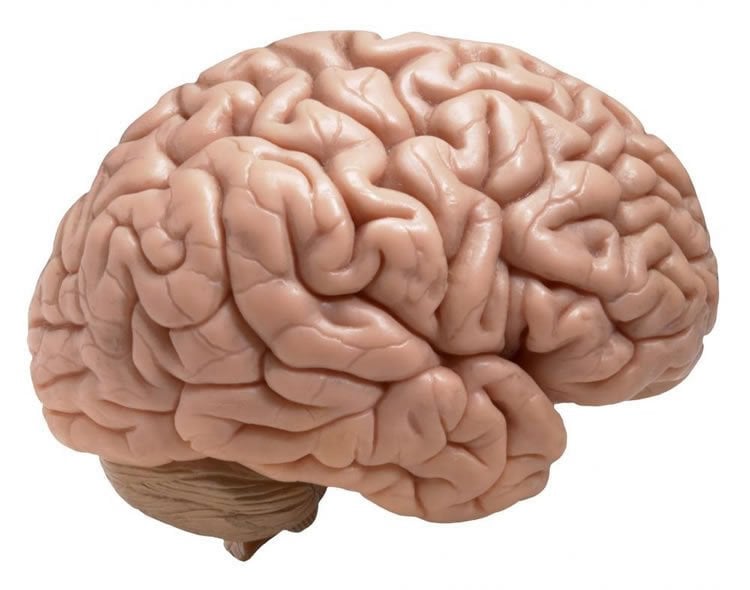Summary: A new study looks at how neurodegenerative diseases like Alzheimer’s are able to spread through the brain.
Source: VIB Flanders.
Synapses, the place where brain cells contact one another, play a pivotal role in the transmission of toxic proteins. This allows neurodegenerative diseases such as Alzheimer’s to spread through the brain. This the main conclusion of new research led by professor Patrik Verstreken (VIB-KU Leuven), in collaboration with Janssen Research & Development (Johnson & Johnson). If the spreading of these toxic proteins could be prevented, the progression of neurodegenerative diseases might be slowed down substantially. The research paper is published in the leading trade journal Cell Reports.
During neurodegenerative disease, including Alzheimer’s, toxic proteins are known to spread throughout the brain. As the disease progresses, more and more brain areas are affected.
Prof. Patrik Verstreken (VIB-KU Leuven): “You can compare it to a drop of ink that falls into a glass of water: gradually, the toxic proteins diffuse through the brain. We knew that the disease follows the existing brain paths but so far it wasn’t clear which processes enabled the spread itself.”
Genetic risk factors
The researchers now offer proof that synapses are critical to mediate the transmission of toxic protein species and reveal the mechanisms behind this process. They show that the toxic proteins cross from one brain cell to the next by being engulfed by ‘vesicles’, small bubbles in the receiving brain cell. There the vesicles burst and release the toxic proteins.

Prof. Patrik Verstreken (VIB-KU Leuven): “We also show how familial history has an impact on this process. There are known genetic factors in the human population that increase the risk to develop Alzheimer’s and we show that one of the more common genetic variants, dubbed ‘BIN1’, directly affects the transmission of toxic proteins at synapses. BIN1 ‘improves’ the transmission at synapses but in doing so, it enables the spread of toxic proteins.”
Next steps
These findings open new perspectives for the treatment of neurodegenerative diseases. By understanding how toxic proteins are passed on between brain cells, researchers may also be able to identify therapeutic avenues to block this process or to shuttle the toxic proteins to the cellular “waste bins”.
Dr. Dieder Moechars (Scientific Director at Janssen Research & Development): “Our work is based on in vitro experiments, so it will now be critical to put our models to the test in in vivo models of Alzheimer’s disease. Knowing the mechanism of spreading, we now need to devise clever ways to interfere with it.”
Source: Sooike Stoops – VIB Flanders
Image Source: This NeuroscienceNews.com image is in the public domain.
Original Research: Full open access research for “Loss of Bin1 Promotes the Propagation of Tau Pathology” by Sara Calafate, William Flavin, Patrik Verstreken, and Diederik Moechars in Cell Reports. Published online October 18 2016 doi:10.1016/j.celrep.2016.09.063
[cbtabs][cbtab title=”MLA”]VIB Flanders. “Researchers Reveal How Neurodegenerative Diseases Spread Through the Brain.” NeuroscienceNews. NeuroscienceNews, 9 November 2016.
<https://neurosciencenews.com/neurodegenerative-disease-spread-5472/>.[/cbtab][cbtab title=”APA”]VIB Flanders. (2016, November 9). Researchers Reveal How Neurodegenerative Diseases Spread Through the Brain. NeuroscienceNews. Retrieved November 9, 2016 from https://neurosciencenews.com/neurodegenerative-disease-spread-5472/[/cbtab][cbtab title=”Chicago”]VIB Flanders. “Researchers Reveal How Neurodegenerative Diseases Spread Through the Brain.” https://neurosciencenews.com/neurodegenerative-disease-spread-5472/ (accessed November 9, 2016).[/cbtab][/cbtabs]
Abstract
Loss of Bin1 Promotes the Propagation of Tau Pathology
Highlights
•Endocytosis interferes with Tau pathology propagation in culture
•BIN1 is a negative modulator of endocytic flux
•BIN1 levels and propagation of Tau pathology are inversely correlated
•Internalized Tau aggregates permeabilize the membrane of endosomes
Summary
Tau pathology propagates within synaptically connected neuronal circuits, but the underlying mechanisms are unclear. BIN1-amphiphysin2 is the second most prevalent genetic risk factor for late-onset Alzheimer’s disease. In diseased brains, the BIN1-amphiphysin2 neuronal isoform is downregulated. Here, we show that lowering BIN1-amphiphysin2 levels in neurons promotes Tau pathology propagation whereas overexpression of neuronal BIN1-amphiphysin2 inhibits the process in two in vitro models. Increased Tau propagation is caused by increased endocytosis, given our finding that BIN1-amphiphysin2 negatively regulates endocytic flux. Furthermore, blocking endocytosis by inhibiting dynamin also reduces Tau pathology propagation. Using a galectin-3-binding assay, we show that internalized Tau aggregates damage the endosomal membrane, allowing internalized aggregates to leak into the cytoplasm to propagate pathology. Our work indicates that lower BIN1 levels promote the propagation of Tau pathology by efficiently increasing aggregate internalization by endocytosis and endosomal trafficking.
“Loss of Bin1 Promotes the Propagation of Tau Pathology” by Sara Calafate, William Flavin, Patrik Verstreken, and Diederik Moechars in Cell Reports. Published online October 18 2016 doi:10.1016/j.celrep.2016.09.063






